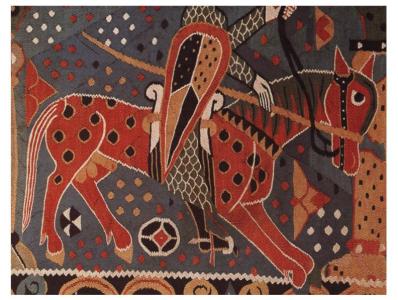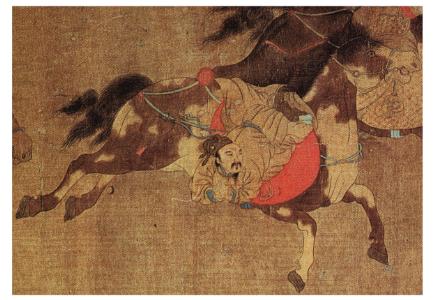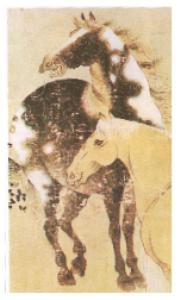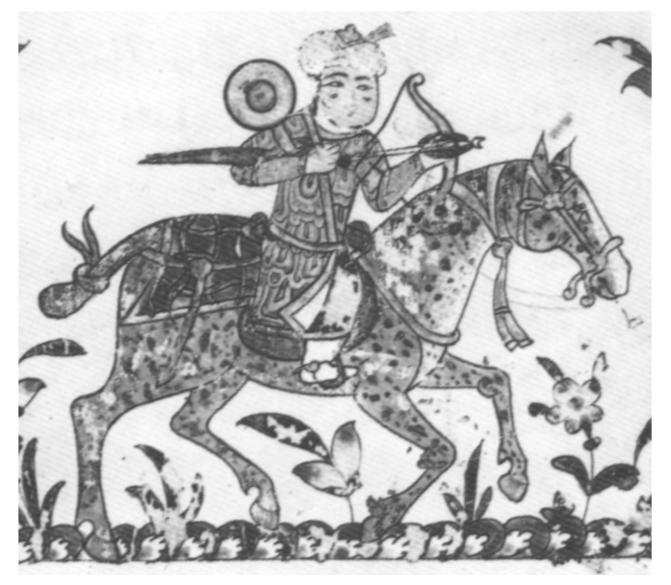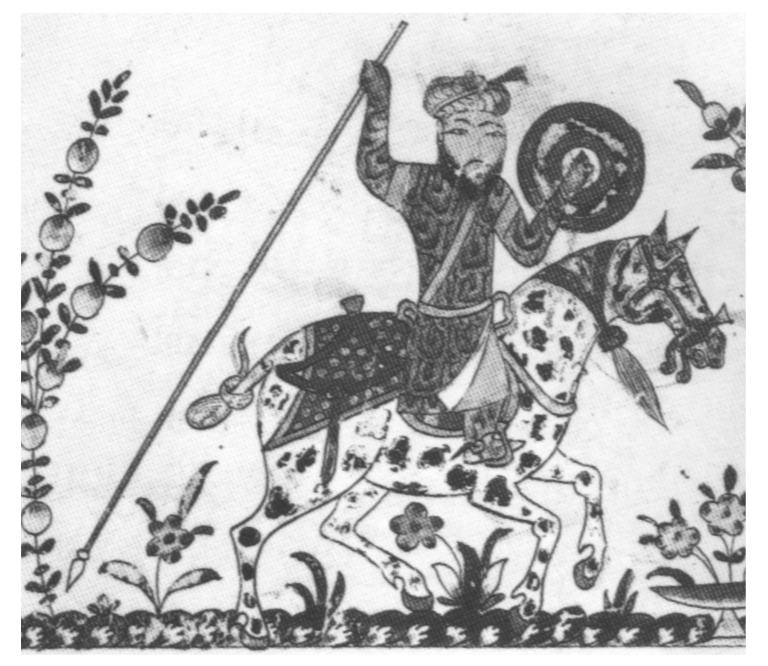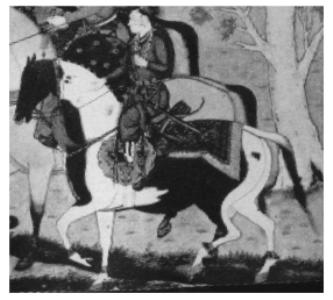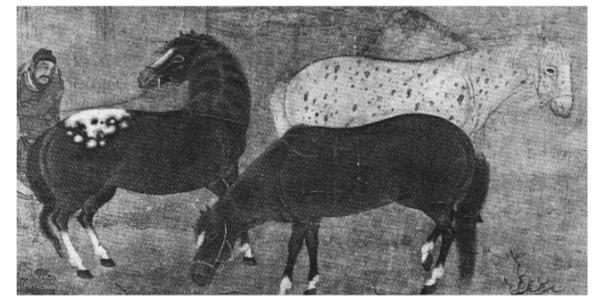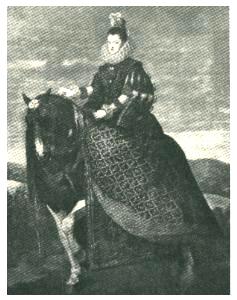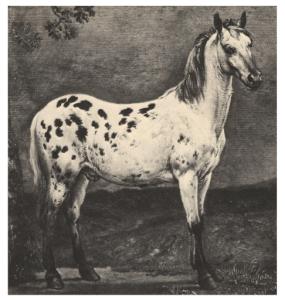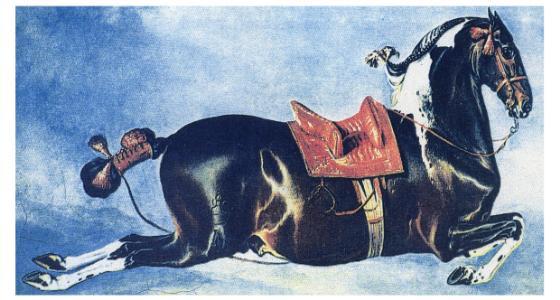There are lots of spotted horses portrayed that are probably dappled but some of them could be "appaloosa" coloring. I have included several of the spotted ones less likely to be dapples. These pictures are in rough order by date. Fashions in color are obvious if you go looking at the horses in paintings. At some points, greys are very popular. It seems that in the 17th c. "paints" were popular.
A drawing from Pech Merle, 15,000-10,000 years old. (The Noble Horse)
This Norwegian tapestry fragment from Baldishol Church is believed to be early thirteenth century, but depicts an eleventh or twelfth century knight similar to those of the Bayeaux Tapestry. (Arms and Armour of the Medieval Knight)
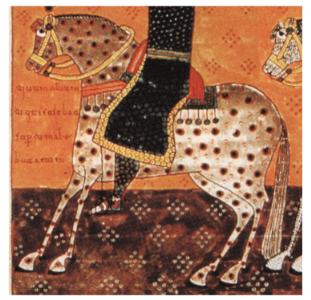
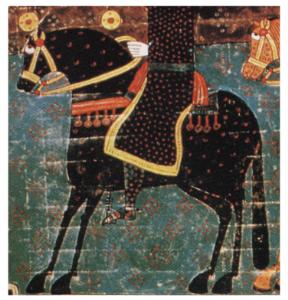
The horsemen of the Four Seals armed with crossbows and swords, from the Silos Apocalypse, 1109. (Medieval Warfare)
A detail of a mongol circus, from a silk scroll painting after Chao Yung, illustrates the role of the horse in entertainment in 14th-century China. Metropolitan Museum of Art, Gift of A.W. Bahr. (The life, history and magic of the Horse)
The colorfulness of the horses is a striking feature of this Persian Miniature. (The Noble Horse)
A good example of "leopard" coloring. Folio 129b from Medieval Muslim Horsemanship
A fourteenth-century Arabic Cavalry Manual
G. Rex Smith
1979, The British Library Board
Published by the Britixh Library
Great Russell Street, London WC1B 3DG
A good example of "leopard" coloring. Folio 138b from Medieval Muslim Horsemanship
A good example of "leopard" coloring. Folio 140a from Medieval Muslim Horsemanship
One of "the Three Sons of Shah Jehan" a painting of the Mogul School dating from the sixteenth century. Victoria and Albert Museum, London. (Horses and Horsemanship through the ages)
This Chinese painting depicts a Mongolian Herdsman. (The Noble Horse)
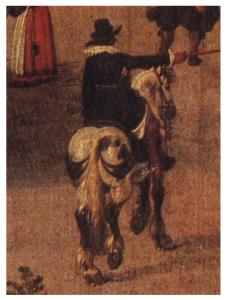
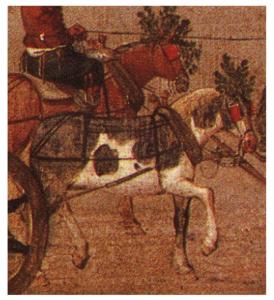
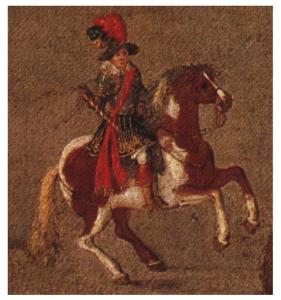
Ommeganck. Denis van Alsloot. Flemish, 1616. Victoria and Albert Museum, London. (Princely Feasts and Festivals)
Queen Margareta, by Velasquez (The Saddle of Queens)
In the White Horse, Paulus Potter, a seventeenth-century Dutch Artist, paints an engagingly spotted animal. Cliche des Musees Nationaux. (The life, history and magic of the Horse)
Cerbero, a renowned Spanish "springer", painted by J.G.von Hamilton. Springer in those days did not indicate a jumping horse in our sense of the word but rather a horse which performed good leaps and "airs" above the ground.(Royal Horse of Europe)
See Overview of Bards and Tack and A Medieval Sidesaddle for extensive Bibliographic Information.
| Home |
| Email me |

